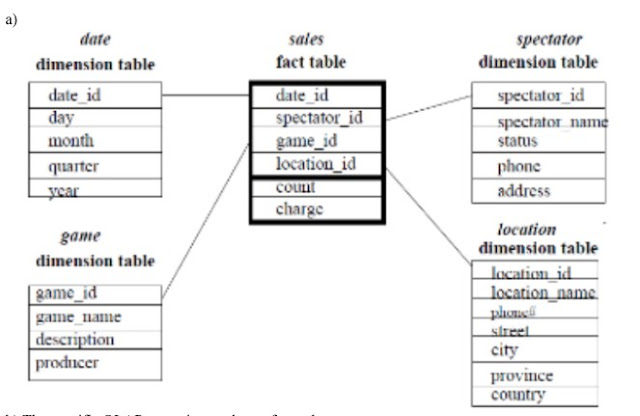Explain Improving Efficiency of Apriori Algorithm .
Improving Efficiency of Apriori Algorithm
Many variations of the Apriori algorithm have been proposed that focus on improving the efficiency of the original algorithm. Several of these variations are summarized as follows:
Hash-based technique
A hash-based technique can be used to reduce the size of the candidate k-itemsets, C_k, for k > 1 For example, when scanning each transaction in the database to generate the frequent 1-itemsets, L1, from the candidate 1-itemsets in C1, we can generate all of the 2-itemsets for each transaction, hash them into the different buckets of a hash table structure, and increase the corresponding bucket counts. A 2-itemset whose corresponding bucket count in the hash table is below the support threshold cannot be frequent and thus should be removed from the candidate set. Such a hash-based technique may substantially reduce the number of candidate k-itemsets examined.
Transaction Reduction
It reduces the number of transactions scanned in future iterations. A transaction that does not contain any frequent k-itemsets cannot contain any frequent (k+1 -itemsets. Therefore, such a transaction can be marked or removed from further consideration because subsequent scans of the database for j-itemsets, where j > k, will not require it.
Partitioning
The set of transactions may be divided into a number of disjoint subsets. Then each partition is searched for frequent itemsets. These frequent itemsets are called local frequent itemsets. Any itemset that is potentially frequent with respect to D must occur as a frequent itemset in at least one of the partitions. Therefore, all local frequent itemsets are candidate itemsets with respect to D. The collection of frequent itemsets from all partitions forms the global candidate itemsets with respect to D.
Sampling
A random sample (usually large enough to fit in the main memory) may be obtained from the overall set of transactions and the sample is searched for frequent itemsets. These frequent itemsets are called sample frequent itemsets. Because we are searching for frequent itemsets in S rather than in D, it is possible that we will miss some of the global frequent itemsets. To lessen this possibility, we use a lower support threshold than minimum support to find the frequent itemsets local to S




Comments
Post a Comment